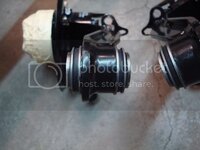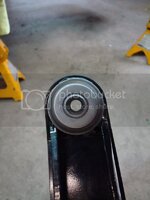I was asked by BBShark to write a procedure on converting poly bushings to rubber bushings on the offset arms. So here it is.
To put it bluntly, these arms have terrible quality control, and I am not the first one to experience the bad design of these arms. I don't care what any of the vendors say - these arms have lots of fitment issues, and they will deny it when you try to converse with them. Here is what I found with my arms.
The bushings were installed on my arms when I received them. I installed them on the chassis. I tested the side to side movement of them before finding several flaws. One, the bushing cups started to push out of the piece of pipe at the end of the arm. These cups are supposed to be pressed in, and they were not - even though I was told by the vendor that they always press their's in. So I pulled the arms out and checked the bushings to see what was going on. I found another issue - the giant conical washers that the flares sit in were now deformed. This is due to the fact that there is a step in the piece of pipe before it is flared, and it essentially becomes one piece once the washer sits on this step, and then it is flared. Any side to side movement is taken by the washers because the poly isn't compressed, and the washer has become one with the piece of pipe. Only after the washers doform does the poly take any load. To put it simply, the design is terrible. Stick with rubber. There were also high spots in the metal which were preventing the bushing cups from sitting flat. Again, poor quality control. THe cups should also meet in the middle of the piece of pipe after being pressed in. Mine had an 1/8'' gap between them. The pipe was also no parallel on the end of the trailing arm, so I had to square those up using a file, but I will get to that later.
Cups starting to push out of the arm - these WERE NOT pressed in.
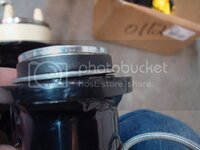
Washers starting to deform before any load is put on the poly bushings. This is because the washer sits flat against a step in the piece of pipe, and then it is flared. Also, the poly isn't compressed like rubber is.
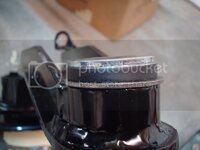
Cups will not sit flat unless the high spots are removed.

First thing I did was remove the bushings from the arm. I was able to push the cups out with my finger, no effort required - and this was still with the thick powdercoating in the hole. I measured the OD of the cups and realized that they were much smaller than the stock bushing cups. I would have to open up the bore of the hole so the rubber cups would be a press fit, but not so tight that you can't get the rubber bushings in the cups. But before I did that, I had to fix some other "mistakes". I removed all ther high spots on the arm which preventied the cups from fully seating.

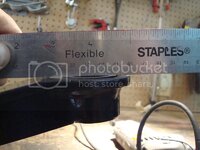
Next thing I did was remove the powdercoating from the hole. I cleaned it up with a wire wheel afterwards. Then I measured the distance between the two rubber bushing cups to see how much of the pipe I had to file away so they would meet in the middle. I also had to square the pipe up - they were not square before when the poly bushings were installed. Use a hand file, and keep measuring the depth of the pipe on all sides until they are equal - file away from just one side, leave the other side alone (I guess it depends on how the arms were welded, but I just filed away one side and made it square). Now, you need to make sure that the side you do not file is indeed square, or else all you will be doing is filing away the other side of the pipe until the sides are parallel to eachother, and it will be cocked.
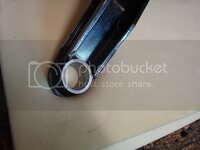
Now I had to open up the bore so that the new rubber cups would be a press fit, but not so tight that the bushings were going to deform when installed. I used a gringding stone to open up the bore, going round and round around the inside of the pipe. Now, because this is not the most accurate method, and you will get an out of round hole (not to the naked eye, but some parts of the hole will be a little larger than others when you measure it will a caliper), you will need to measure the pipe in several places and use the largest measurement you find, and imagine that as the size of the ID of the entire pipe. I know it sounds bubba, but these are bushing cups, not bearings for example. Do this until the largest ID of the pipe is around 10 thou smaller than the bushing cup - I had to sort of guess when it was going to be a nice fit, but I got it dead on. You will have to play around with it, just don't make it too big or else your cups won't be a press fit and they will be loose. I suppose you could weld your cups to the arm if they are not a press fit as well, but I didn't do that. SUpport the arm and use a socket/large hammer to smack the cups into the arm. go slowly and make sure to get them fully seated.
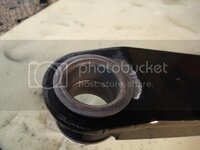
Install your rubber bushings and you are done.
